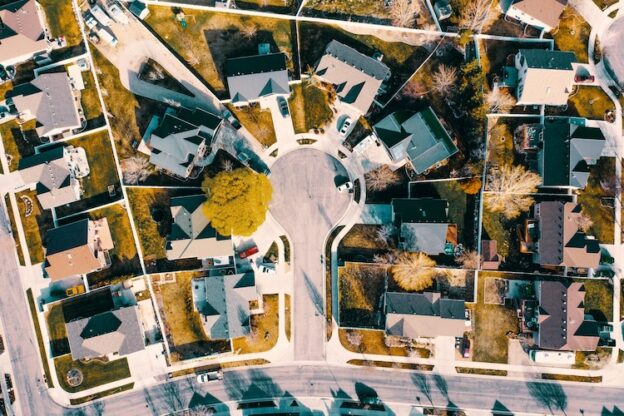Making long-lasting upgrades to your living space is a smart investment. Thoughtful improvements not only add value but also help avoid frequent repairs. By choosing durable materials and staying proactive with upkeep, you can create a comfortable and efficient environment for years to come. From structural reinforcements to energy-saving upgrades, each enhancement plays a key role in extending the life of your property.
Here’s how you can keep your home in top shape:
Prioritize Essential Structural Upgrades
The strength of your property starts with its foundation. A well-maintained foundation ensures long-term stability and prevents expensive structural damage. Inspecting for cracks, water intrusion, or shifting walls can help detect issues early. Reinforcing weak points in the foundation, sealing gaps, and improving drainage around the perimeter will protect your investment. Additionally, maintaining the integrity of load-bearing walls, beams, and support structures reduces risks associated with shifting and settling over time.
Upgrade to Energy-Efficient Windows
Old or poorly sealed windows can lead to significant energy loss. Replacing them with high-performance models improves insulation and reduces heating and cooling expenses. Double-pane or triple-pane glass provides better temperature regulation and noise reduction. Also, windows with low-emissivity (Low-E) coatings help block UV rays, preventing furniture and flooring from fading over time.
Beyond efficiency, new window designs can improve security. Impact-resistant options add an extra layer of protection, while modern locking mechanisms enhance safety. Investing in well-insulated models cuts down on utility costs and enhances your home’s overall comfort and appearance.
Invest in Quality Roofing Solutions
A strong roof is essential for protecting your investment from weather damage. Investing in high-quality materials, such as metal panels or premium asphalt shingles, offers superior resistance against harsh conditions. Working with an experienced roofer helps in selecting the right materials that provide durability and efficiency.
For example, some providers offer a complete range of solutions, from roof assessments to full-scale replacements. Their services often include inspections, leak detection, and guidance on the best options for different climates. Choosing a reputable company ensures proper installation, extending the lifespan of your roofing structure while improving energy efficiency. Also, routine inspections and prompt fixes can help prevent costly damage, keeping your home safe from the elements.
Enhance Exterior Siding
The right siding protects against moisture, wind, and temperature fluctuations. Quality materials like fiber cement, brick, or vinyl offer durability while requiring minimal upkeep. Proper installation prevents water infiltration, reducing the risk of mold and structural damage.
In addition to shielding against the elements, new siding can dramatically improve curb appeal. Many modern options come in various textures and colors, allowing homeowners to achieve a customized aesthetic. By upgrading to a durable siding solution, you create a barrier against harsh conditions while enhancing the overall appearance of your property.
Modernize Your HVAC System
An outdated heating and cooling setup can lead to high energy costs and inconsistent indoor temperatures. Upgrading to a more efficient system improves air circulation while reducing power consumption. Modern HVAC solutions, such as heat pumps and smart thermostats, offer better climate control and automation features.
Regular system inspections and filter replacements improve performance and air quality. Proper ductwork insulation prevents energy loss, keeping heating and cooling systems functioning optimally. With the right upgrades, maintaining a comfortable environment becomes easier while lowering monthly expenses.
Install Water-Efficient Fixtures
Reducing water waste is a practical way to lower utility costs and promote sustainability. Replacing old faucets, showerheads, and toilets with water-efficient models can significantly decrease consumption without sacrificing performance. Look for products labeled with the WaterSense certification, as they meet efficiency standards while maintaining strong water flow.
In addition to replacing fixtures, consider upgrading to a tankless water heater. These units provide hot water on demand, eliminating the need to store and continuously heat water. This upgrade reduces energy costs and extends the lifespan of the system.
Regular maintenance, such as checking for leaks and sediment buildup, also helps keep plumbing components functioning properly. Addressing minor issues early prevents larger, more expensive problems in the future.
Opt for Durable Flooring Materials
Flooring plays a major role in both aesthetics and functionality. High-traffic areas require materials that withstand wear and tear while remaining easy to clean. Hardwood, luxury vinyl plank (LVP), and porcelain tile are excellent choices due to their longevity and resistance to moisture and scratches.
LVP mimics the look of wood but offers superior durability, making it ideal for households with children and pets. Porcelain tile is another long-lasting option that resists water damage, making it suitable for kitchens and bathrooms. If comfort is a priority, cork, and bamboo flooring provide a softer underfoot feel while maintaining durability.
Proper installation and regular cleaning prolong the life of any flooring material. Using area rugs in high-use spaces and applying protective pads to furniture legs can further minimize damage over time.
Update Insulation for Better Efficiency
Proper insulation plays a key role in regulating indoor temperatures and reducing energy waste. Insufficient insulation allows heat to escape in the winter and lets warm air in during the summer, leading to higher energy costs.
Adding insulation in key areas, such as walls, attics, and crawl spaces, improves thermal efficiency. Spray foam, fiberglass, and cellulose insulation are all effective choices, each offering unique benefits. In addition to improving energy savings, quality insulation enhances soundproofing, creating a quieter and more comfortable environment.
Incorporate Smart Home Technology
Smart technology provides homeowners with better control over security, lighting, and climate regulation. Devices such as smart thermostats, automated lighting systems, and security cameras can enhance convenience while lowering energy consumption.
For example, smart thermostats learn usage patterns and adjust temperatures automatically, improving efficiency. Motion-sensing lights help cut down on electricity costs by only activating when needed. Security systems with remote access allow homeowners to monitor their property in real time. These features not only add convenience but also increase overall safety and efficiency.
Long-lasting improvements go beyond aesthetics. They improve functionality, efficiency, and overall value. By prioritizing essential upgrades, integrating energy-efficient solutions, and keeping up with regular maintenance, homeowners can create a space that stands the test of time. Thoughtful planning and smart investments improve daily comfort and provide long-term benefits for years to come.








